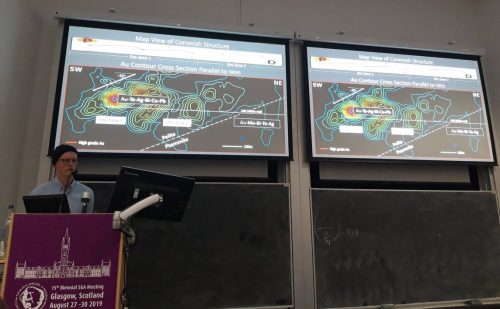Background & Activities
The Cononish gold and silver project forms the core economic basis of the company’s Grampian Project. Cononish mine highlights both the feasibility and potential for further mining operations in Scotland.
Exploration around the Cononish gold and silver deposit continues to be a strong focus for the company, with successful orientation surveys in 2018 identifying new anomalies and justifying further investigation around the known deposit. Details of the results of the orientation survey can be found here.
Current activities include:
- Re-examination of Scotgold’s extensive archive of surface and underground diamond drill core, with a view of more accurately mapping lithological units to better understand any litho-chemical controls to the Cononish style of mineralisation.
- Soil sampling using the ionic leach technique.
- Ground geophysical surveys using techniques such as IP (induced polarisation) and magnetics to image the Cononish deposit in three dimensions, in addition to nearby subsurface structures.
Academic Research
Calum Lyell is currently working towards a PhD at the Scottish Universities Environmental Research Centre (SUERC). Calum is working closely with Scotgold geologists, to understand the formation of the Cononish deposit.
The Cononish deposit consists of a series of near-vertical, gold and base-metal bearing quartz veins; the product of ancient hydrothermal fluids. Although the deposit reaches a maximum thickness of 6.0m, gold mineralization is limited to specific vein episodes that have since been overprinted, making high-grade ore hard to disentangle. Whilst gold mineralization at Cononish is estimated to have occurred over 400 million years ago – coincident in time with granitic magmatism around Glencoe – the two are over 15km apart and so appear unrelated. Thus, Cononish remains poorly understood.
Calum’s research adopts a two-pronged approach that aims to assist on-site ore processing and targeted exploration programmes, whilst evolving our genetic understanding of gold mineralization in Scotland’s Grampian Terrane. Based on new mapping, comprehensive sample collection and rigorous micro-scale petrographic observations from the most intensely mineralized areas of the existing underground workings, Calum will begin by establishing a new mineralization sequence for Cononish – differentiating between gold-rich and gold-poor vein episodes. Preliminary findings have indicated that gold was emplaced by at least three phases of hydrothermal fluid injection. These observations have already highlighted key disparities, such as the size, purity and disposition of gold between ore-samples at different underground exposures. Taking these findings forward, Calum aims to use stable isotope geochemistry to compare the distinct signatures of Cononish with the Glencoe granites, defining the linkage between the two and re-defining the relationship between gold at Cononish and regional igneous activity.

PhD Candidate Calum Lyell presenting at the SGA Conference in Glasgow, August 2019

